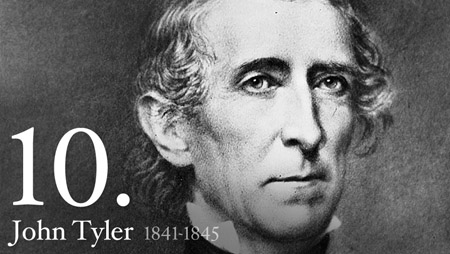
John Tyler, the 10th President of the United States, assumed office under unprecedented circumstances following the death of President William Henry Harrison. His presidency, from April 4, 1841, to March 4, 1845, was marked by significant political conflicts, landmark decisions, and enduring legacies. This article provides an in-depth look at the key dates and events of Tyler’s presidency, offering a comprehensive understanding of his time in office.
April 4, 1841: Ascension to the Presidency
John Tyler was thrust into the presidency following the sudden death of William Henry Harrison. Tyler’s swift decision to take the presidential oath on April 6, 1841, and his insistence on being recognized as the President rather than acting president set a crucial precedent for presidential succession. This move, though initially contested, was eventually accepted and established the “Tyler Precedent,” which became an important aspect of the 25th Amendment.
Early Challenges: April – June 1841
Tyler’s early presidency was fraught with challenges. He inherited Harrison’s cabinet and retained most members, including Secretary of State Daniel Webster. However, his relationship with the Whig Party was tenuous. Tyler, a former Democrat, had joined the Whigs out of opposition to Andrew Jackson, and his ideological differences soon became apparent.
In May 1841, Tyler faced his first significant test when he vetoed a bill to reestablish the Bank of the United States, a key Whig policy. His veto led to a political firestorm, with prominent Whigs like Henry Clay denouncing him. Tyler’s decision underscored his commitment to states’ rights and limited federal power, principles he had long championed.
The Cabinet Crisis: September 1841
Tensions between Tyler and the Whigs reached a boiling point in September 1841 when Tyler vetoed a second bank bill. In response, all but one of his cabinet members resigned. Daniel Webster, the Secretary of State, was the only one who stayed, largely because he was involved in delicate negotiations with Great Britain. Tyler’s resolve during this crisis demonstrated his independence and willingness to stand by his principles, even at great political cost.
The Webster-Ashburton Treaty: August 9, 1842
One of Tyler’s significant achievements was the signing of the Webster-Ashburton Treaty on August 9, 1842. Negotiated by Daniel Webster and British representative Lord Ashburton, the treaty resolved several border disputes between the United States and British North America (Canada), particularly in Maine and Minnesota. It also addressed issues related to the suppression of the slave trade. This diplomatic success was a rare moment of bipartisan support and international cooperation during Tyler’s presidency.
Domestic Turmoil: 1842-1843
Domestically, Tyler’s presidency was marked by ongoing conflict with Congress. His veto of tariff bills in 1842 further alienated him from the Whig Party. Despite these challenges, Tyler managed to pass a revised tariff act in August 1842, which protected American industries while addressing revenue needs. However, his inability to maintain a stable political coalition hampered his legislative agenda.
The Annexation of Texas: 1843-1844
One of the most consequential actions of Tyler’s presidency was the push for the annexation of Texas. Tyler, a strong advocate of westward expansion, saw Texas as a crucial addition to the United States. In April 1844, he signed a treaty of annexation with the Republic of Texas. However, the treaty faced significant opposition in the Senate, primarily from anti-slavery senators who feared the expansion of slave states. The Senate rejected the treaty in June 1844.
Undeterred, Tyler continued to pursue annexation. He shifted tactics, proposing a joint resolution of Congress, which required only a simple majority. This move paid off, and in March 1845, just days before leaving office, Texas was admitted to the Union. Tyler’s efforts to annex Texas significantly shaped the future of the United States, setting the stage for further expansion and conflict.
Tyler’s Legacy and the Election of 1844
As the 1844 presidential election approached, Tyler sought to run as an independent candidate. However, his lack of a strong political base and the emergence of James K. Polk as the Democratic candidate led him to withdraw from the race. Tyler’s decision to support Polk, who also advocated for the annexation of Texas, helped ensure the continuation of his expansionist policies.
The Final Months: Late 1844 – Early 1845
In the final months of his presidency, Tyler focused on securing the annexation of Texas and maintaining stability. His administration concluded negotiations with China, resulting in the Treaty of Wanghia in July 1844, which opened Chinese ports to American trade and granted extraterritorial rights to U.S. citizens in China. This treaty marked an important step in expanding American influence in Asia.
March 4, 1845: End of Presidency
Tyler’s presidency officially ended on March 4, 1845, when James K. Polk was inaugurated as the 11th President of the United States. Tyler’s departure from office marked the end of a tumultuous and transformative period in American history.
Post-Presidency and Legacy
After leaving the presidency, Tyler retired to his plantation in Virginia. He remained politically active, supporting Southern secession and eventually serving in the Confederate Congress during the Civil War. Tyler’s presidency, often overshadowed by the events that followed, left a lasting impact on American politics and governance. His assertive use of presidential power, commitment to states’ rights, and efforts to expand the nation through the annexation of Texas were defining features of his tenure.
John Tyler’s presidency, marked by significant achievements and profound challenges, serves as a critical chapter in the story of the United States. His ability to navigate the complexities of succession, assert his authority, and influence the course of American expansion highlights the enduring significance of his time in office. Despite the controversies and conflicts, Tyler’s presidency helped shape the nation’s trajectory, leaving an indelible mark on its history.